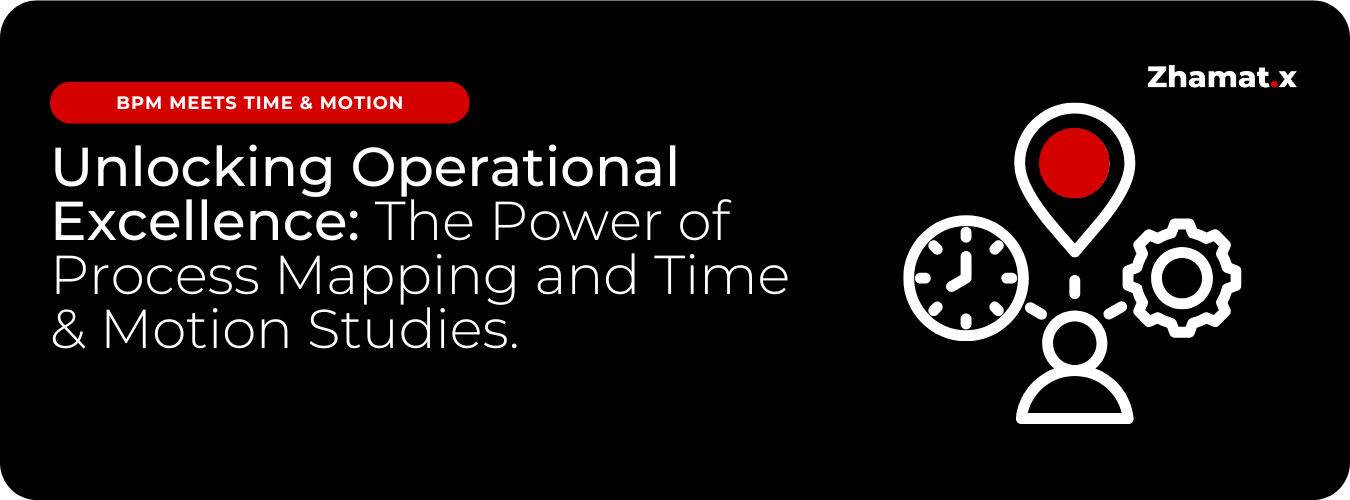The Power of BPM and Time & Motion Studies
Achieving operational excellence isn’t a one-off initiative, it’s a continuous, evolving journey. To stay competitive and adaptable, organisations must systematically examine and refine the way they work. Two techniques stand out for their clarity and impact: process mapping and time and motion studies.
Individually, they offer value, but when combined, they become a powerful engine for transformation and continuous improvement. In this post, we’ll explore how these techniques work together and share a real-world case study from one of our recent clients to illustrate the impact.
What Is Process Mapping?
Process mapping is the practice of creating a visual diagram that represents the flow of work, showing every step, stakeholder, system, and interaction in a process. This practice uncovers:
Redundancies and bottlenecks
Role ambiguities
Cross-functional handoff issues
Opportunities for improvement or automation
A good process map doesn't just show how a process should work, it reveals how it actually works.
What Are Time and Motion Studies?
Time and motion studies measure the time it takes to perform each task and observe how it's executed. This methodology, which originated in industrial settings, provides:
A data-driven view of effort and delays
Insight into where manual tasks consume valuable time
A basis for standardising work and allocating resources effectively
Combined with process maps, these studies allow organisations to understand not just what is happening, but how efficiently it’s happening.
The Synergy: Driving Continuous Improvement
While process mapping shows the structure of work, time and motion studies show the performance within that structure. Together, they drive informed decisions that enhance performance and support a culture of continuous improvement.
Case Study: Department of Communities (DoC)
The Department of Communities (DoC) engaged Zhamatix to assess and improve how contract management and procurement were being handled across a wide array of service areas, including Out of Home Care, Family and Domestic Violence, and Disability Services.
The Challenge:
Different teams performed similar tasks in different ways
Heavy reliance on manual tools like Excel and shared folders
Processes spanned multiple disconnected systems
Limited visibility and accountability
Lack of documented escalation paths and wait times
These inefficiencies made it difficult to manage contracts consistently and slowed down decision-making across teams.
The Solution:
Zhamatix facilitated over 25 workshops and sessions with nine teams to capture the real, day-to-day processes.
Deliverables included:
40+ detailed process maps documenting current workflows
A Time and Motion Report highlighting time spent on key activities
Clear identification of manual dependencies, unclear roles, and system gaps
The Result:
The insights provided a solid foundation for system transformation. DoC gained:
A comprehensive view of current practices
A clear path forward to streamline operations
A data-backed strategy to inform the design and implementation of a modern contract management system
This work set the stage for sustained operational improvement and alignment with future digital solutions.
Operational Excellence in Action
The DoC case highlights a critical truth: real change starts with real understanding.
By integrating process mapping and time and motion studies, organisations can:
Eliminate waste
Standardise best practices
Enhance cross-team collaboration
Build momentum for larger transformation initiatives
Conclusion
Whether you're looking to improve productivity, reduce cost, or prepare for a system upgrade, the combined approach of process mapping and time and motion studies offers a low-risk, high-impact starting point.


